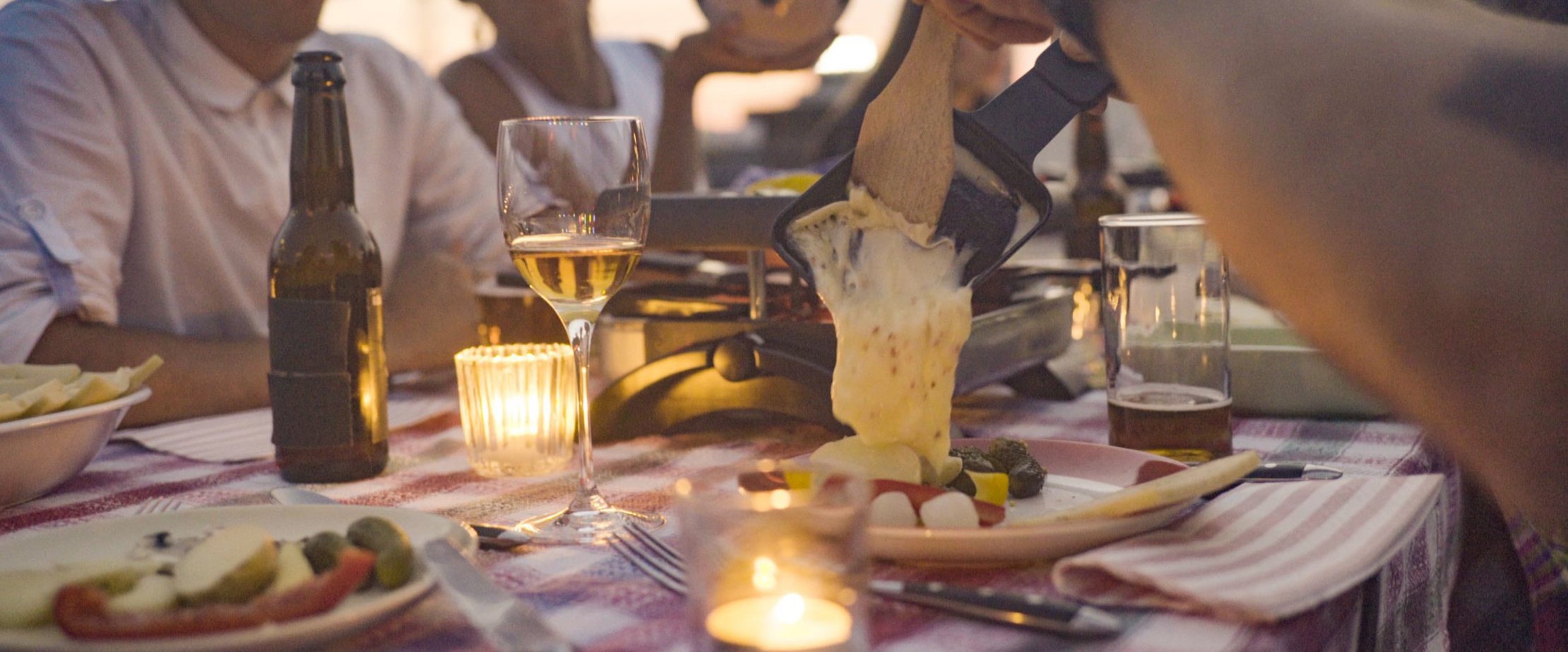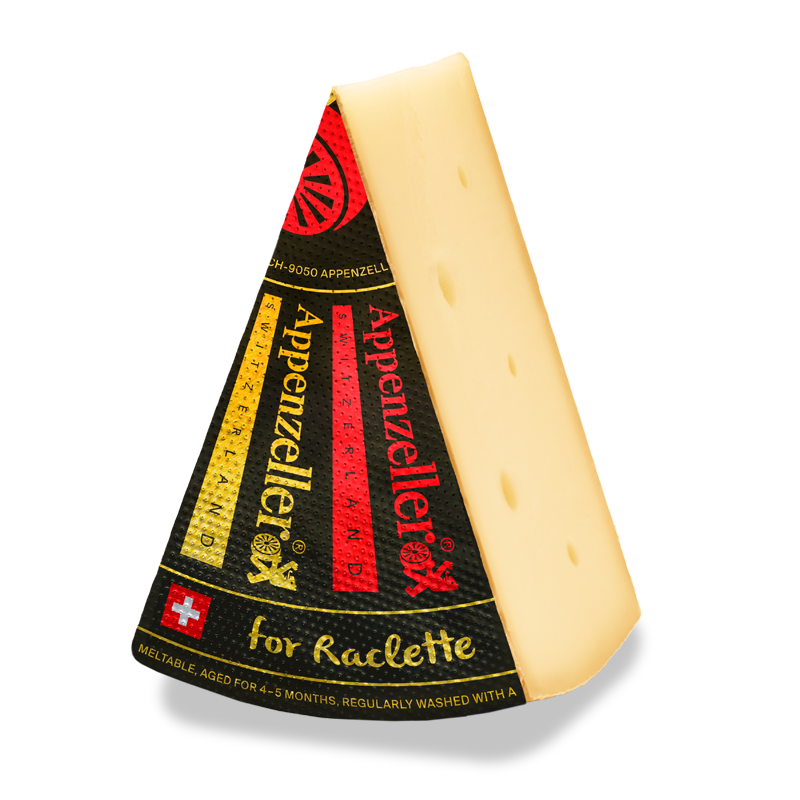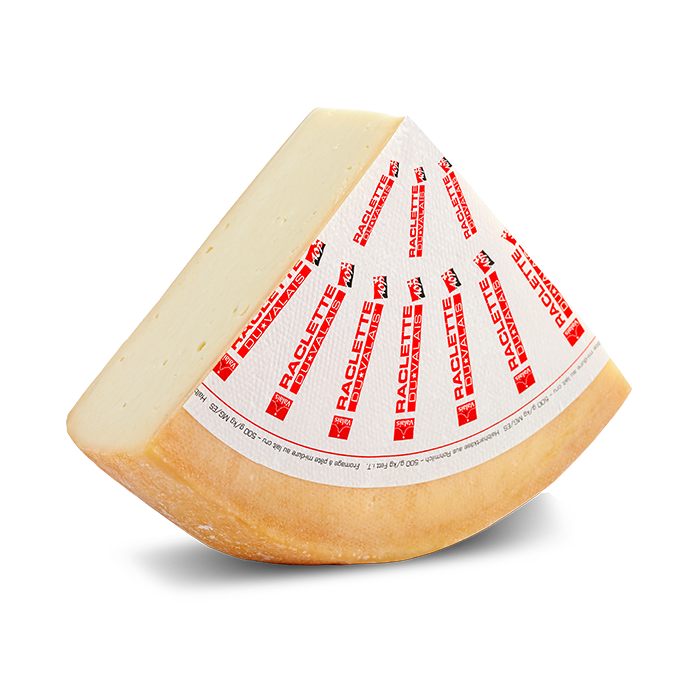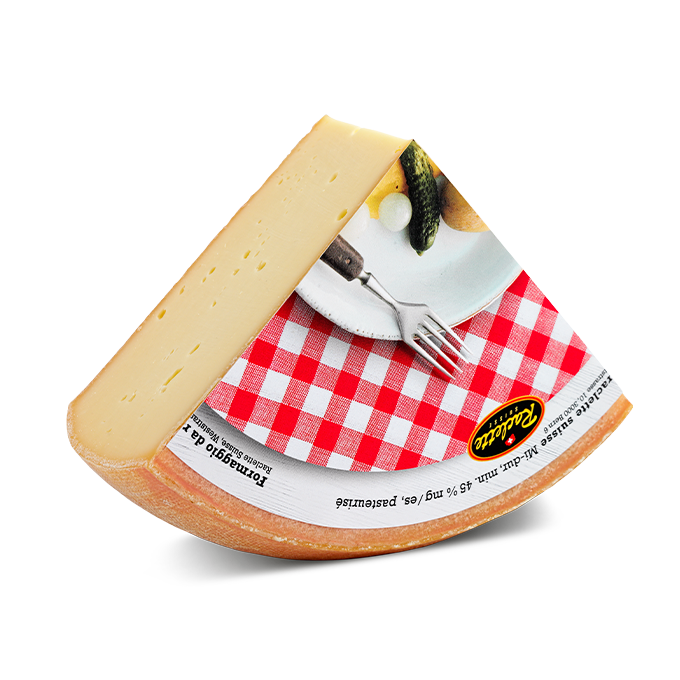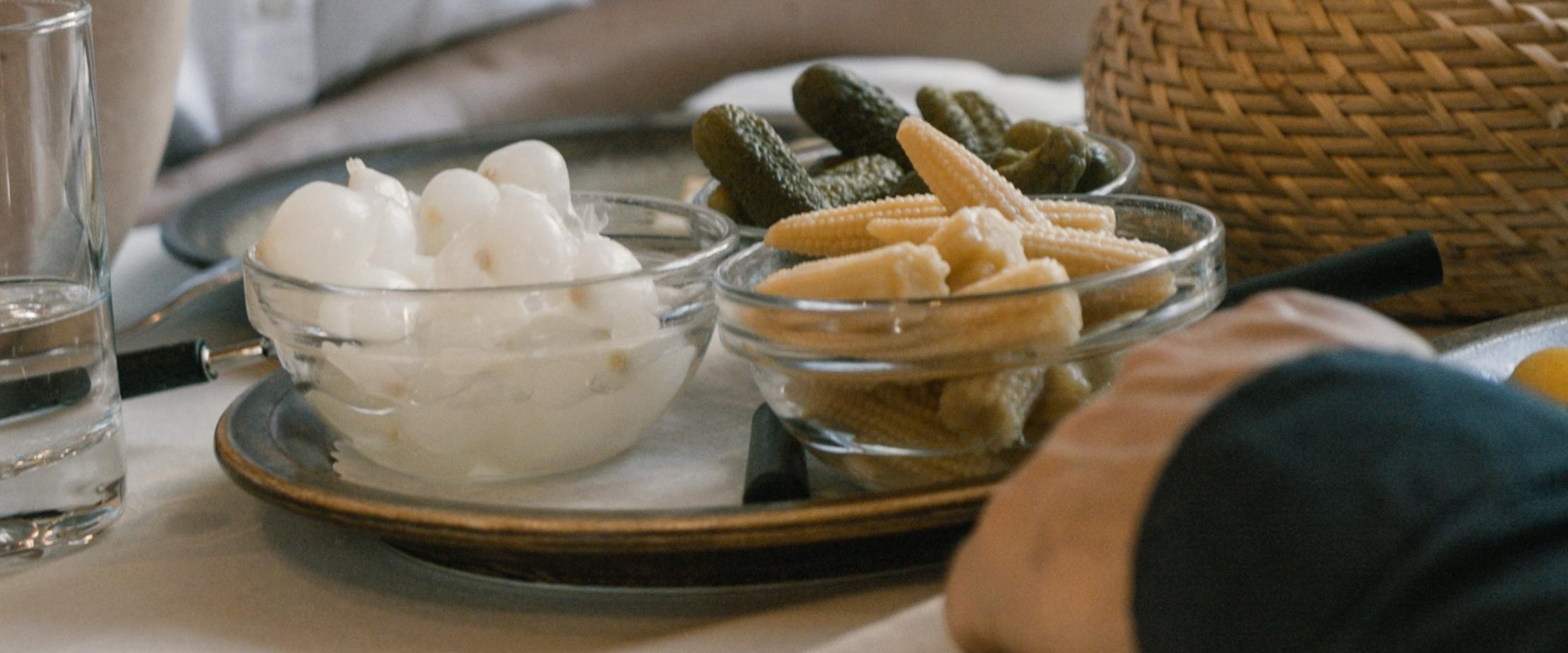Swiss raclette cheese is a full-fat, finely melting, semi-hard cheese, which has been matured for at least three months and is made from raw or pasteurised cow’s milk without any additives. Raclette cheese is distinguished by its aromatic smell and its outstanding melting properties.
Types of raclette cheese
In most regions of Switzerland, raclette cheese is also eaten directly from the pan at the table. Raclette or “bratkäse” was originally scraped directly from the half cheese wheel, which was warmed on the stove or on an open fire. This type of raclette is still enjoyed in Valais to this day. Raclette du Valais AOP is still enjoyed almost exactly like this to this day – especially during the summer months.
When it comes to raclette cheese, the possibilities are almost endless. Whether from unpasteurised or pasteurised milk; whether mild or flavoursome; whether plain, smoked or seasoned with garlic, red pepper, pepper or chilli. Or, if you want something a bit different, why not try raclette made from buffalo, sheep or goat milk?
Raclette du Valais AOP
This traditional semi-hard cheese from the Valais is still produced in accordance with a recipe that has been passed down through generations. Raclette du Valais AOP is a natural product made using Valaisian unpasteurised milk and has borne the protected designation of origin AOP, which distinguishes it as a typical and traditional product of its region, since 2007. Valaisian raclette cheese has a fresh, milky flavour, combined with a slightly sour taste dominated by herbal and fruity notes, which are owed to the rich array of flora found in the Valaisian mountain and alpine region. Experts can easily identify whether a Valaisian raclette cheese has come from the Turtmanntal, the Val de Bagnes or the Goms based on the taste alone.
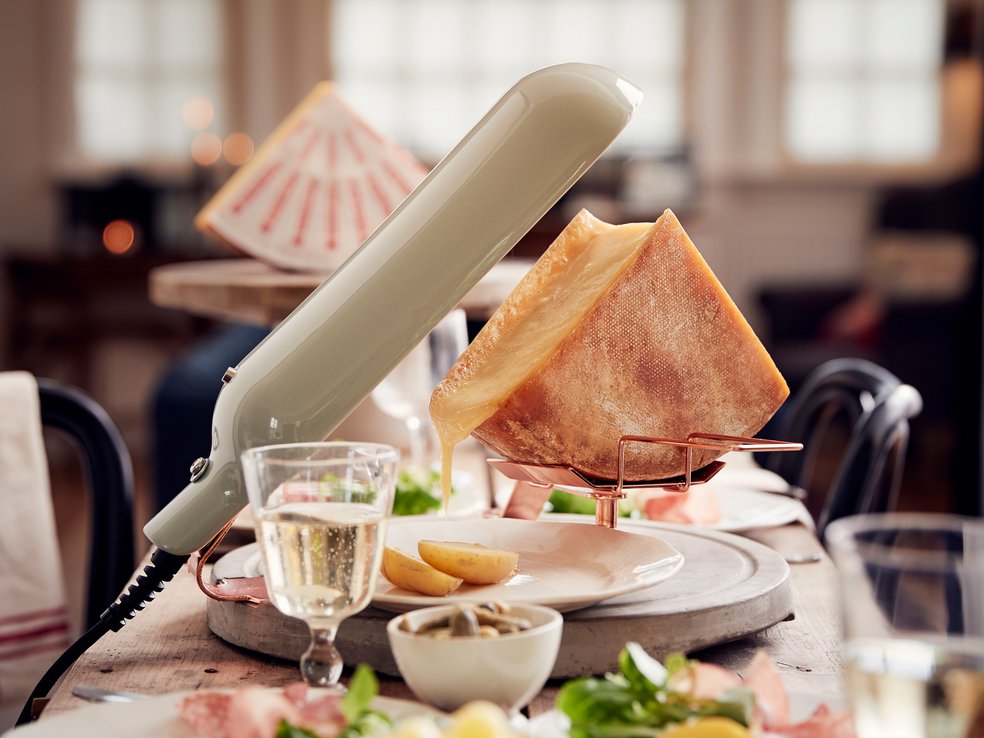
Raclette Suisse®
The Raclette Suisse® brand brings together a huge range of raclette cheeses from across Switzerland. Made from both pasteurised and unpasteurised milk. The cheese varieties are produced in various cantons in the Alps, for example in the regions of Freiburg and Bern, as well as Central Switzerland. The aromatic herbs found in the meadows to the north of the Alps create a naturally semi-hard raclette cheese, distinguished by a mild flavour and a well-rounded aroma. Raclette Suisse® guarantees the cheese is from Switzerland and is of exceptional quality.

Raclette cheese for all tastes
Raclette on an open fire
Nowadays, the classic way of preparing raclette, in which you place half a wheel of raclette cheese on a board near the embers and then use a knife to simply scrape the soft cheese directly onto your plate, is predominantly found in the Valais canton – either at festivals or in traditional restaurants. The cheese isn’t just melted by the fire; it is also smoked and grilled, which lends the Valais raclette its typical, unmistakeable aroma. This authentic type of raclette is a real experience: not just because of the fascinating way in which it is prepared; but also because of the convivial atmosphere created when a group of people sit around a fire to wait for their next portion of raclette.

Raclette stoves for half blocks of cheese
Cooking raclette on an open fire isn’t always ideal for modern homes. Electric tabletop raclette stoves are the next best thing, however, and allow you to melt half a wheel of cheese at once. The stoves feature one or more holders in which the half blocks of cheese are secured with the open side to the top and heated from above. The cheese can be directly scraped onto the plate using this method too – it takes a little getting used to, however, and it is best if the host takes on the role of chief racleur.
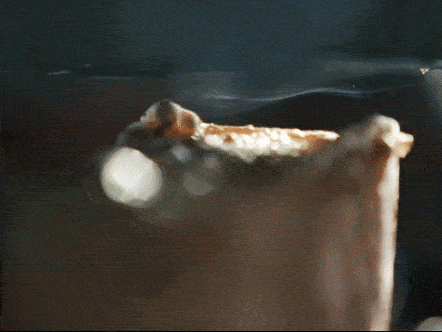
Raclette stoves with mini pans
The most common version of raclette is where individual slices of cheese are melted in a small pan, which is placed in a tabletop stove. The raclette spatula – made of wood or plastic – is the utensil classically used with this dish. Over the years, some extremely high-tech raclette ovens have been developed, which allow up to 12 people to enjoy raclette at the same time. Raclette cheese made using pasteurised milk is best for the raclette ovens with small pans. In the case of unpasteurised raclette cheese, make sure that the cheese isn’t heated up for too long or too quickly.

A brief history of raclette
The first written reference to raclette in the Valais dates back to 1574. But the “Bratchäs” (bread cheese) – a precursor to raclette, which was melted on an open fire and then stripped off onto a plate – was mentioned in writings from monasteries in Obwalden and Nidwalden from the 12th century. The term “Raclette” comes from the French word “racler”, which means “scrape, peel”. For a long time, bratchäs and raclette were typical foods enjoyed by Alpine farmers. It was only in the 20th century that the delicious cheese dish made its way into the valleys, where it quickly became one of the most popular Swiss national dishes – and it has remained so to this day.
